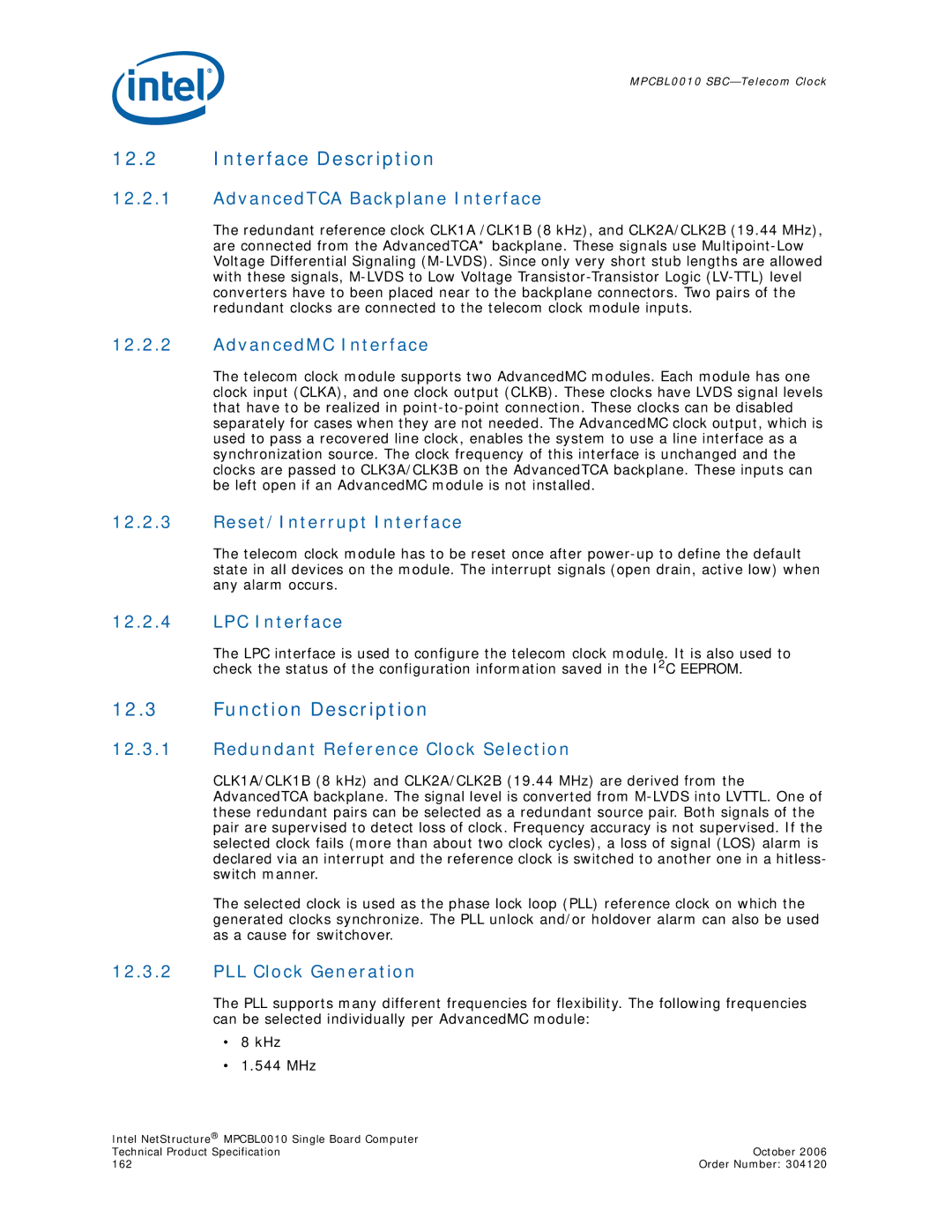
MPCBL0010
12.2Interface Description
12.2.1AdvancedTCA Backplane Interface
The redundant reference clock CLK1A /CLK1B (8 kHz), and CLK2A/CLK2B (19.44 MHz), are connected from the AdvancedTCA* backplane. These signals use
12.2.2AdvancedMC Interface
The telecom clock module supports two AdvancedMC modules. Each module has one clock input (CLKA), and one clock output (CLKB). These clocks have LVDS signal levels that have to be realized in
12.2.3Reset/Interrupt Interface
The telecom clock module has to be reset once after
12.2.4LPC Interface
The LPC interface is used to configure the telecom clock module. It is also used to check the status of the configuration information saved in the I2C EEPROM.
12.3Function Description
12.3.1Redundant Reference Clock Selection
CLK1A/CLK1B (8 kHz) and CLK2A/CLK2B (19.44 MHz) are derived from the AdvancedTCA backplane. The signal level is converted from
The selected clock is used as the phase lock loop (PLL) reference clock on which the generated clocks synchronize. The PLL unlock and/or holdover alarm can also be used as a cause for switchover.
12.3.2PLL Clock Generation
The PLL supports many different frequencies for flexibility. The following frequencies can be selected individually per AdvancedMC module:
•8 kHz
•1.544 MHz
Intel NetStructure® MPCBL0010 Single Board Computer |
|
Technical Product Specification | October 2006 |
162 | Order Number: 304120 |
